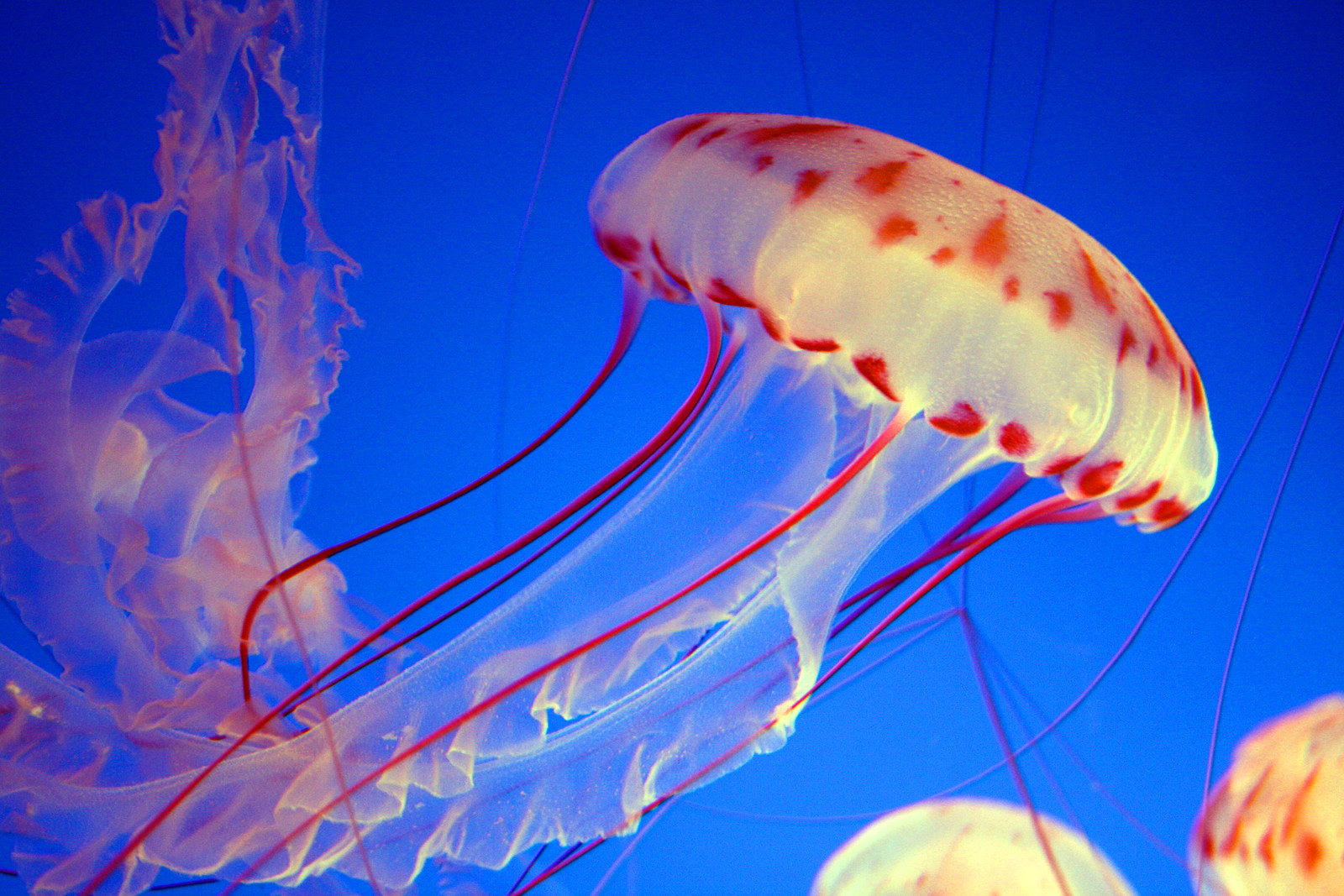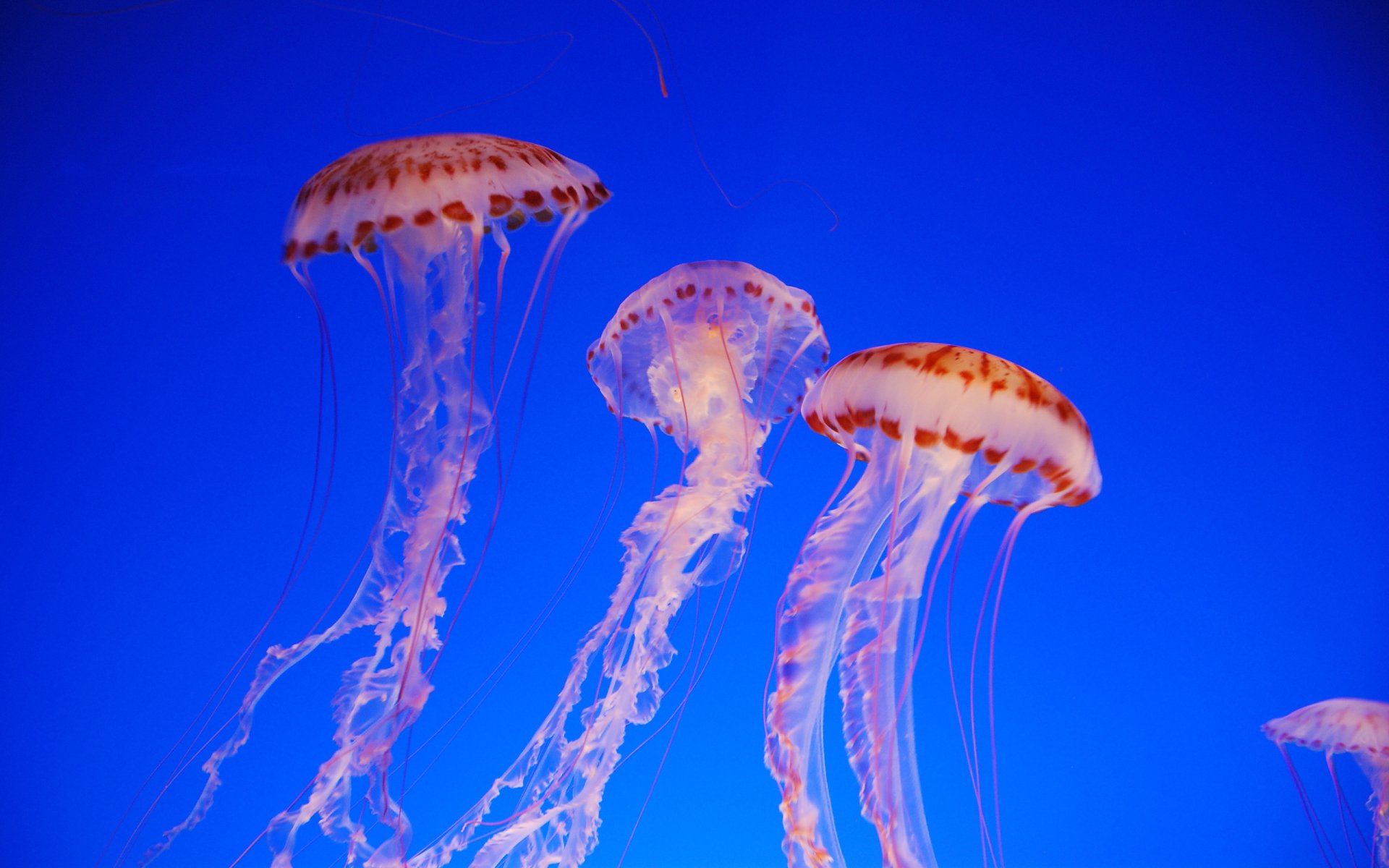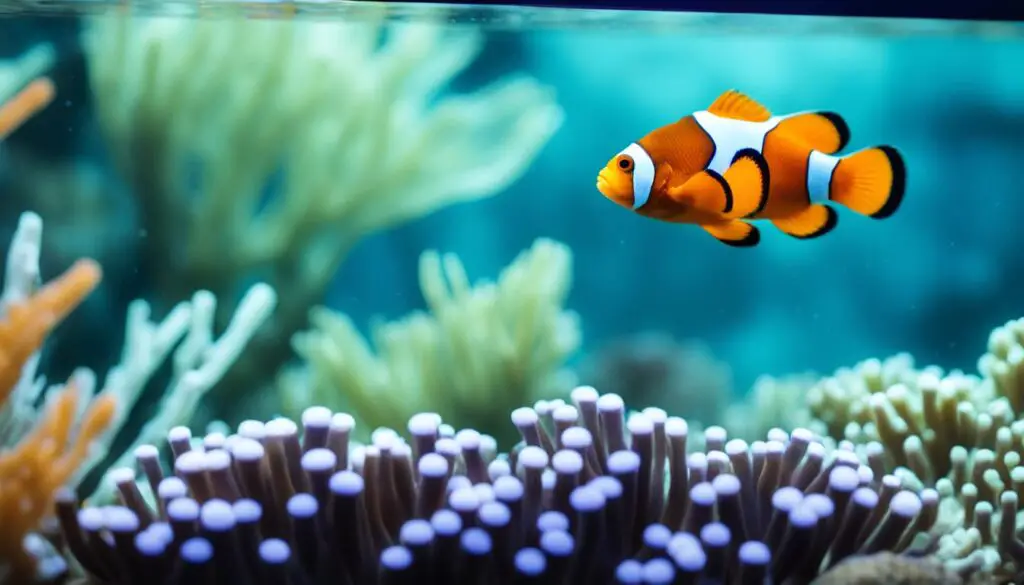How Do Jellyfish Live Without A Brain

Introduction
How Do Jellyfish Live Without A Brain: Jellyfish, fascinating marine creatures belonging to the phylum Cnidaria, challenge conventional notions of life and biology. One of the most intriguing aspects of their existence is their ability to survive and thrive without a centralized brain. In a world where complex nervous systems and advanced brains often signify higher-order functions and survival strategies, jellyfish present a remarkable anomaly. This raises fundamental questions about the nature of life, consciousness, and adaptation.
Living without a brain, the central processing unit common to most organisms, seems counterintuitive to traditional understandings of life and behavior. However, jellyfish, equipped with a decentralized nerve net, showcase a different approach to navigating their marine environment. This nerve net, although simpler in structure than a centralized brain, is instrumental in coordinating their basic responses to stimuli, allowing them to move, hunt for prey, and engage in various activities essential for survival.
Exploring how jellyfish brain thrive without a brain delves into the very essence of their biological makeup and the incredible adaptive mechanisms they employ. Their existence challenges our understanding of intelligence and cognition, prompting us to reconsider the diverse ways in which life forms can evolve and interact with their surroundings. This exploration opens a gateway to understanding the unique strategies that have evolved in the evolutionary tapestry of life, demonstrating the incredible diversity and adaptability of organisms in the vast and mysterious oceans.

How are jellyfish alive without a heart?
Their skin is so thin that they can absorb oxygen right through it, so they don’t need lungs. They don’t have any blood so they don’t need a heart to pump it. And they respond to the changes in their environment around them using signals from a nerve net just below their epidermis — the outer layer of skin.
Jellyfish, despite their lack of a centralized circulatory system like a heart, are indeed alive and thrive in the ocean. Their unique physiology enables them to function and survive without a traditional heart, showcasing the versatility of life forms in the marine realm.
Jellyfish employ a simpler and more decentralized method of circulating nutrients and oxygen throughout their bodies. They possess a gelatinous, soft-bodied structure that allows for passive diffusion of gases and nutrients across their cell membranes. The outer layer of their body, known as the epidermis, is thin enough to facilitate this diffusion, absorbing oxygen directly from the surrounding water.
Their movement, primarily a pulsating bell or umbrella-like motion, aids in water circulation. This motion creates a flow of water through the jellyfish, enabling the exchange of gases and nutrients with the environment. Additionally, jellyfish have a gastrovascular cavity, a central part of their body, where digestion and nutrient distribution occur. The cavity branches into smaller canals that reach all parts of the jellyfish, ensuring nutrients reach various cells.
Jellyfish rely on their decentralized nerve net and ganglia, a primitive nervous system, to coordinate their movements, respond to stimuli, and regulate essential functions. While they lack a heart, the combination of diffusion, simple nervous system, and rhythmic pulsations allows jellyfish to thrive in their marine environment, emphasizing the diversity and adaptability of life forms in the ocean.
How do jellyfish live without brain and heart?
Instead of a single, centralized brain, jellyfish possess a net of nerves. This “ring” nervous system is where their neurons are concentrated—a processing station for sensory and motor activity. These neurons send chemical signals to their muscles to contract, allowing them to swim.
Jellyfish, remarkable marine creatures, demonstrate a fascinating adaptation of life without a centralized brain or heart. Instead of a conventional brain, they possess a simple nerve net or “nerve web” that is diffusely spread throughout their epidermis, the outer layer of their body. This nerve net helps coordinate basic motor functions and responses to stimuli, allowing them to move and navigate in their environment.
In terms of circulation, jellyfish lack a heart or a true circulatory system. However, their unique body structure and the marine environment play a crucial role in their survival. The gelatinous consistency of their bodies enables efficient diffusion of gases, nutrients, and waste products directly through their cell membranes. As the jellyfish pulsate or contract and relax their bell-shaped bodies, they create a flow of water, facilitating the exchange of oxygen and nutrients with the surrounding environment.
The diffusion of oxygen and nutrients occurs through their thin epidermis, reaching the cells in the interior of their bodies. Additionally, the gastrovascular cavity, a central part of their body, helps distribute nutrients to various parts of the jellyfish. This decentralized system, combined with passive diffusion and rhythmic pulsations, allows jellyfish to sustain their vital functions and survive without a heart.
Understanding how jellyfish adapt to this decentralized nervous system and circulatory mechanism provides valuable insights into the adaptability of life forms and the diverse strategies employed by marine organisms to thrive in their respective ecosystems.
How do jellyfish eyes work without a brain?
The jellyfish don’t have a brain to deal with any incoming visual information; they rely instead on a simple ring of nerves to coordinate behaviour.
Jellyfish possess a unique and intriguing sensory system, including specialized structures that function similarly to eyes, despite the absence of a centralized brain. These structures allow jellyfish to detect light and respond to their surroundings, aiding in their survival and navigation through the ocean.
Known as rhopalia, these sensory structures are distributed around the edge of the jellyfish’s bell. Each rhopalium contains a concentrated cluster of nerve cells and specialized pigment cup ocelli. These ocelli act as photoreceptors, detecting changes in light intensity, direction, and possibly even color. While not as complex as the eyes of higher-order organisms, these structures provide a basic level of visual perception.
The nerve cells within the rhopalia process the information received from the ocelli and help the jellyfish respond to light stimuli. This decentralized nervous system allows for localized processing of sensory information and rapid, instinctive responses without the need for a central brain.
While jellyfish lack a brain, their nervous system is remarkably efficient in processing sensory inputs and coordinating motor responses. The rhopalia act as sensory hubs, enabling the jellyfish to detect light, shadows, and potentially even changes in water conditions. This sensory ability is vital for their survival, helping them navigate their environment, avoid predators, and locate prey efficiently.
Do jellyfish feel pain?
Jellyfish don’t feel pain in the same way that humans would. They do not possess a brain, heart, bones or a respiratory system. They are 95% water and contain only a basic network of neurons that allow them to sense their environment.
Jellyfish lack a centralized brain and a central nervous system. Their nervous system is decentralized, consisting of a loose network of nerve cells or a nerve net that allows for simple reflex responses to stimuli. Pain, as perceived by higher animals, involves processing and interpreting signals in a complex brain, a level of neurological sophistication that jellyfish do not possess.
When a jellyfish encounters a stimulus or danger, it reacts with instinctual, automated responses that are not indicative of pain perception as experienced by animals with a more advanced nervous system. These responses aim to protect the jellyfish from harm, such as retracting their tentacles or moving away from the source of irritation.
In essence, attributing the human experience of pain to jellyfish may be anthropomorphism, where human traits or experiences are applied to non-human organisms. While jellyfish may exhibit responses to adverse stimuli, these responses likely operate on a simpler, instinctual level and may not equate to the experience of pain as we understand it. Nonetheless, research continues to explore the perception and awareness of jellyfish and other marine creatures to deepen our understanding of their sensory experiences.
How do jellyfish respond to stimuli?
Jellyfish have nerve cells (neurons) in their epidermis and specialized structures that enable responses to stimuli.
Jellyfish, despite their seemingly simple anatomy, exhibit a range of responses to various stimuli in their environment. Their responses are primarily driven by a decentralized nervous system, including a loose network of nerve cells known as a nerve net. While not as complex as the nervous systems of higher-order animals, this nerve net allows jellyfish to detect and respond to changes in their surroundings.
- Light and Shadow Responses:
Jellyfish are sensitive to light and shadow. When exposed to light, they may exhibit positive phototaxis, moving towards light sources. Conversely, they may display negative phototaxis, moving away from bright light or shadows, which could indicate potential threats or predators.
- Chemical and Odor Responses:
Jellyfish can respond to chemical cues in the water, enabling them to detect the presence of prey or identify their mating partners. This chemosensory ability aids in their foraging and reproductive behaviors.
- Mechanical Responses:
Jellyfish demonstrate mechanical responses to touch or disturbances in their environment. If a jellyfish’s bells or tentacles are touched, they may retract their tentacles as a protective measure.
- Temperature and Salinity Responses:
Changes in water temperature and salinity can also trigger responses in jellyfish. They may move to different depths or locations in response to variations in these environmental factors.
- Gravity Responses:
Jellyfish possess specialized structures called statocysts that allow them to sense gravity. This helps them maintain proper orientation in the water column and adjust their movement accordingly.
While their responses are instinctual and not driven by conscious thought processes, these reactions enable jellyfish to navigate their environment, locate food, avoid threats, and maintain their position in the marine ecosystem. Understanding their responses to stimuli is essential for appreciating their adaptive strategies and ecological roles.
Can jellyfish learn or exhibit memory without a brain?
Jellyfish do not possess complex learning or memory capabilities due to their decentralized nervous system.
Jellyfish, lacking a centralized brain or complex nervous system, do not possess the ability to learn or exhibit memory in the way higher-order animals do. Learning and memory, as we understand them, typically involve the processing, retention, and recall of information, which necessitate a sophisticated neural network and brain structures.
Jellyfish primarily rely on a decentralized nervous system known as a nerve net, which is comparatively simple and does not facilitate the complexity required for learning and memory formation. Their responses to stimuli are instinctual and automatic, driven by their nerve net’s basic reflexes rather than learned behaviors.
However, some studies suggest that jellyfish may exhibit a form of behavioral plasticity, where they can adjust their responses based on their experiences with certain stimuli. For instance, they can adapt their swimming behavior based on exposure to different light conditions or alter their responses to mechanical stimuli.
These behavioral changes are likely due to the inherent plasticity of their nerve net and the ability to modulate their reflexive responses based on repeated exposures to specific stimuli. Nevertheless, this is not equivalent to learning in higher animals with complex nervous systems.
How do jellyfish hunt for prey without a brain?
Jellyfish use their nematocysts (stinging cells) and tentacles to capture prey, relying on instinctive responses driven by their nervous system.
Jellyfish, despite lacking a centralized brain, have evolved efficient mechanisms to hunt for prey and sustain themselves in the ocean. Their feeding strategy primarily relies on their unique body structure, specialized cells, and instinctual behaviors.
- Stinging Cells (Nematocysts):
Jellyfish possess specialized cells called nematocysts in their tentacles, which are used for hunting. Nematocysts are stinging cells that contain a coiled, harpoon-like structure. When triggered by physical contact or chemical signals from potential prey, these nematocysts rapidly discharge, injecting venom into the prey to immobilize and capture it.
- Tentacle Movement:
Jellyfish extend their long, trailing tentacles in the water, maximizing the surface area available for prey capture. These tentacles are equipped with thousands of nematocysts, enhancing their efficiency in ensnaring prey.
- Passive Drift and Ambush:
Many jellyfish engage in passive drifting, allowing them to move with ocean currents. This drifting strategy helps them encounter and capture unsuspecting plankton and small fish that come in contact with their tentacles.
- Filter Feeding:
Some jellyfish, like the moon jellyfish (Aurelia aurita), employ a method known as filter feeding. They create a gentle water current by pulsating their bell, pulling in plankton and other small organisms, which get entangled in their mucous-laden tentacles.
- Digestion and Nutrient Absorption:
Once the prey is ensnared, the jellyfish’s tentacles guide it towards the mouth, located on the underside of the bell. The prey is then transported to the gastrovascular cavity, where digestion and nutrient absorption occur.
In essence, jellyfish utilize their specialized stinging cells, tentacles, and feeding mechanisms to capture and consume prey efficiently, showcasing their remarkable adaptation to survival without a centralized brain. Their hunting strategy is a blend of instinctual responses and biological adaptations finely tuned over millennia.
How do jellyfish reproduce without a brain?
Jellyfish reproduce through a complex life cycle involving a polyp and medusa stage, driven by instinctual behaviors and environmental triggers.
Jellyfish have a fascinating reproductive process despite their lack of a centralized brain. Their ability to reproduce is driven by their decentralized nervous system and intricate biological mechanisms evolved over millions of years.
- Asexual Reproduction:
Jellyfish can reproduce asexually through a process called budding. Certain cells in the jellyfish’s body undergo mitosis, forming small outgrowths or buds. These buds grow and develop into genetically identical polyps, eventually detaching and becoming independent juvenile jellyfish, also known as medusae.
- Sexual Reproduction:
Jellyfish primarily reproduce sexually, involving both male and female individuals. They release gametes (eggs and sperm) into the water. The gametes fuse, forming a zygote, which eventually develops into a planula larva.
- Planula Larvae:
The planula larvae are free-swimming and eventually settle on a suitable substrate, where they transform into polyps. These polyps then undergo a process of strobilation, where they divide into segments called ephyrae.
- Ephyrae and Medusae:
The ephyrae are released and grow into juvenile jellyfish, or medusae, which resemble adult jellyfish. These juvenile jellyfish continue to grow and mature into fully grown adults, completing the life cycle.
While jellyfish do not possess a brain to coordinate their reproductive processes in the way higher organisms do, their decentralized nervous system coordinates the instinctual behaviors necessary for successful reproduction. These reproductive strategies, shaped by millions of years of evolution, allow jellyfish to thrive and perpetuate their species in diverse marine environments.

Conclusion
The enigmatic existence of jellyfish, navigating the vast ocean without a centralized brain, unravels a captivating tale of adaptation and survival. Their ability to thrive without a conventional brain challenges traditional paradigms of biological complexity and intelligence. Instead of a central nervous system, jellyfish employ a decentralized nerve net, a testament to the diverse ways life can manifest and flourish.
The decentralized nerve net orchestrates the essential functions required for the jellyfish’s survival, enabling them to respond to stimuli, hunt for prey, reproduce, and adapt to their environment. This decentralized model of nervous control showcases the ingenious simplicity of nature, proving that complexity is not the only path to successful survival and ecological integration.
The study of how jellyfish live without a brain provides a profound glimpse into the depth of evolutionary mechanisms and the marvels of natural selection. It prompts us to question our preconceived notions of cognition and sheds light on alternative adaptive strategies in the animal kingdom.
Jellyfish, with their elegant dance in the oceans, exemplify the beauty of simplicity in biological design, showcasing the potential for life to thrive in diverse and unexpected ways. This exploration invites further inquiry into the incredible spectrum of adaptations that allow organisms to inhabit and conquer the myriad ecosystems of our planet.



